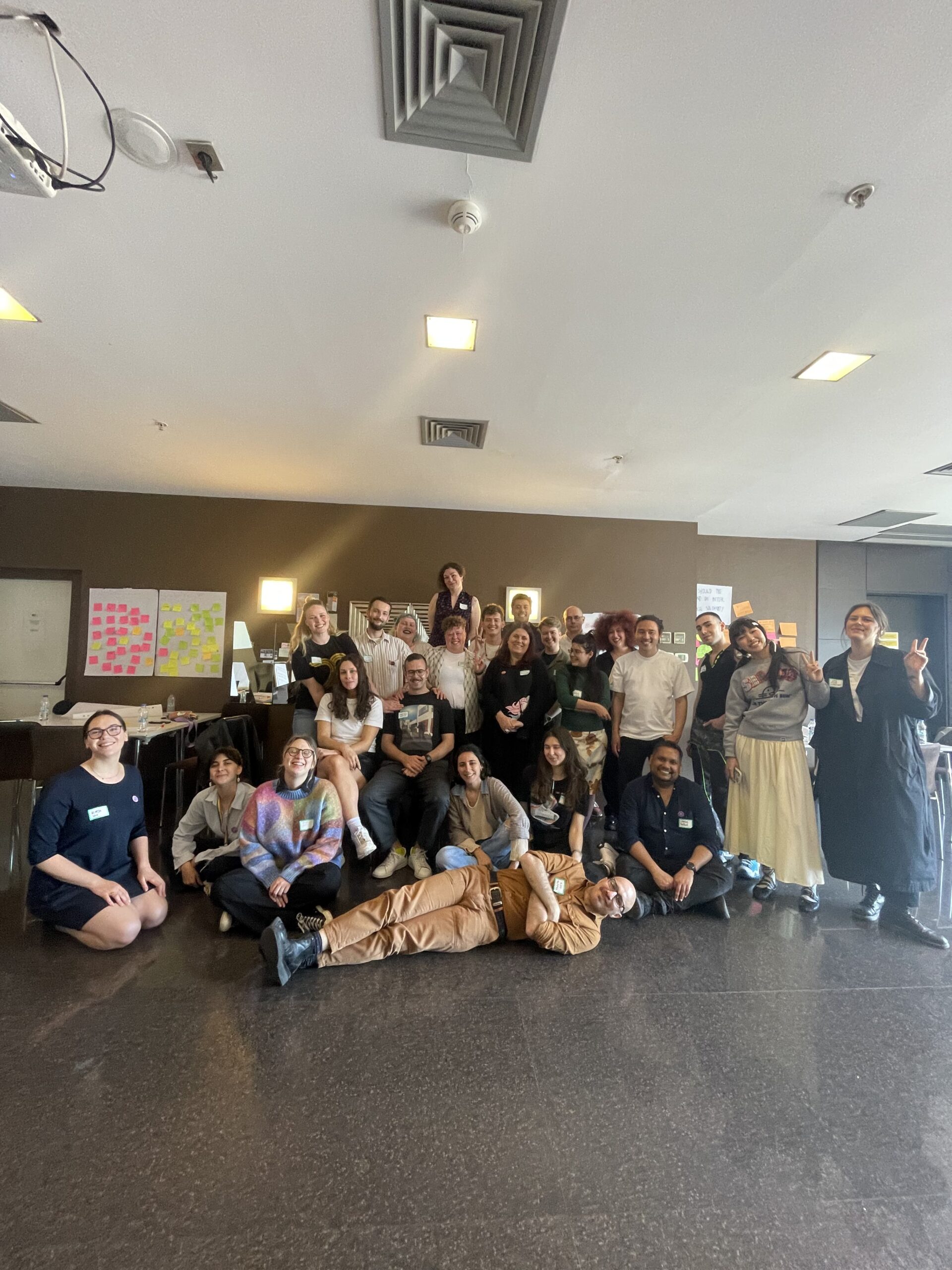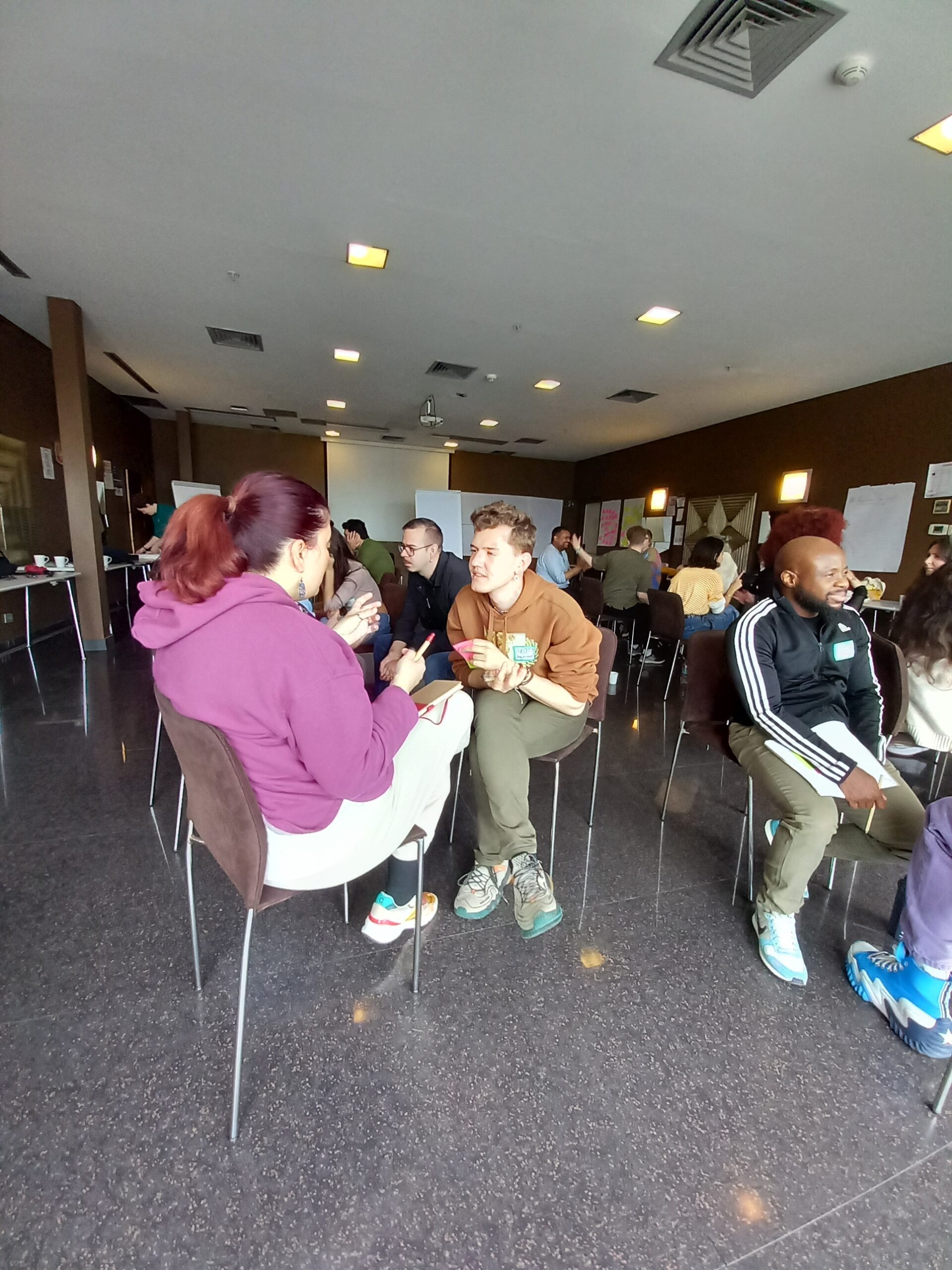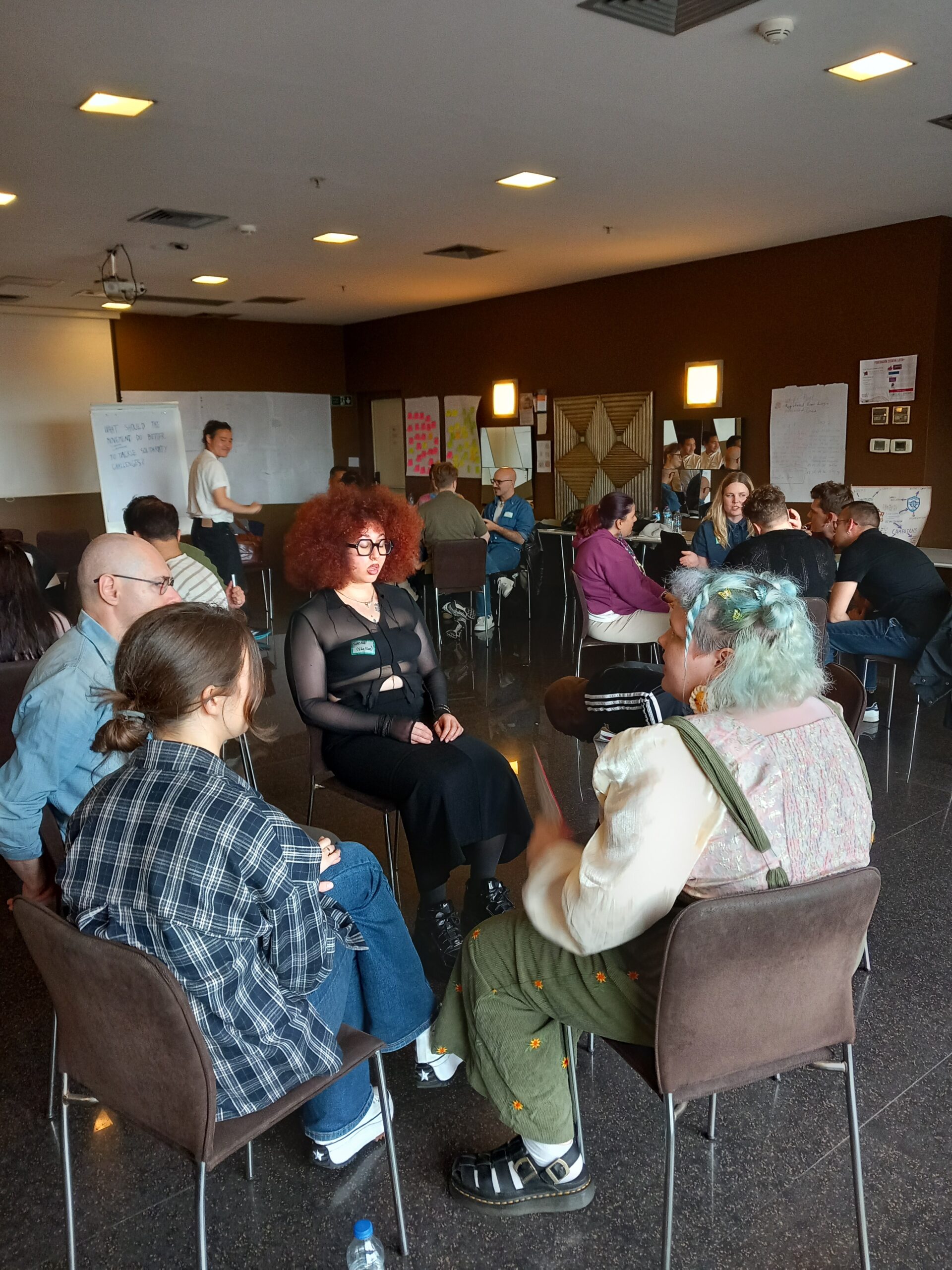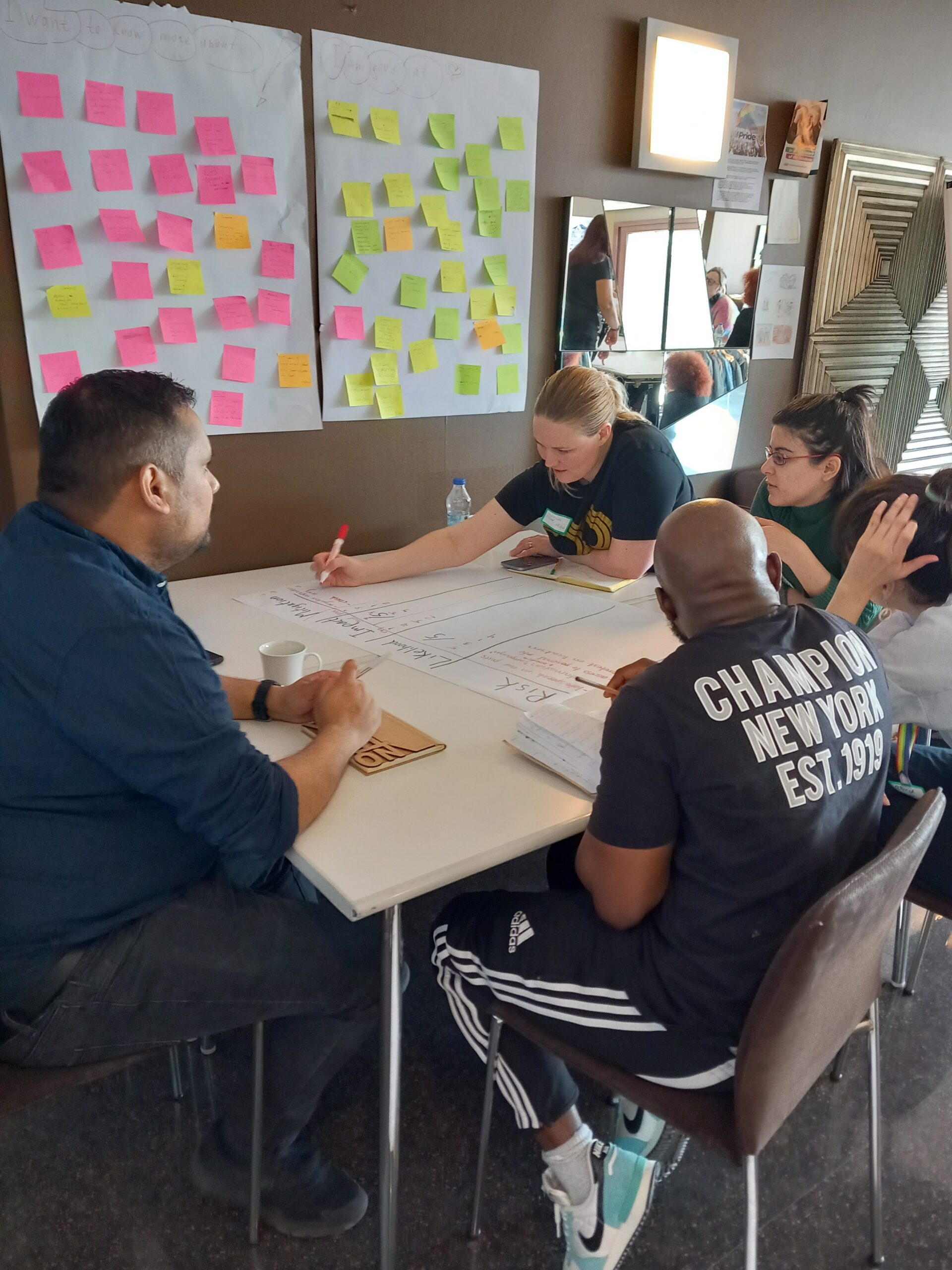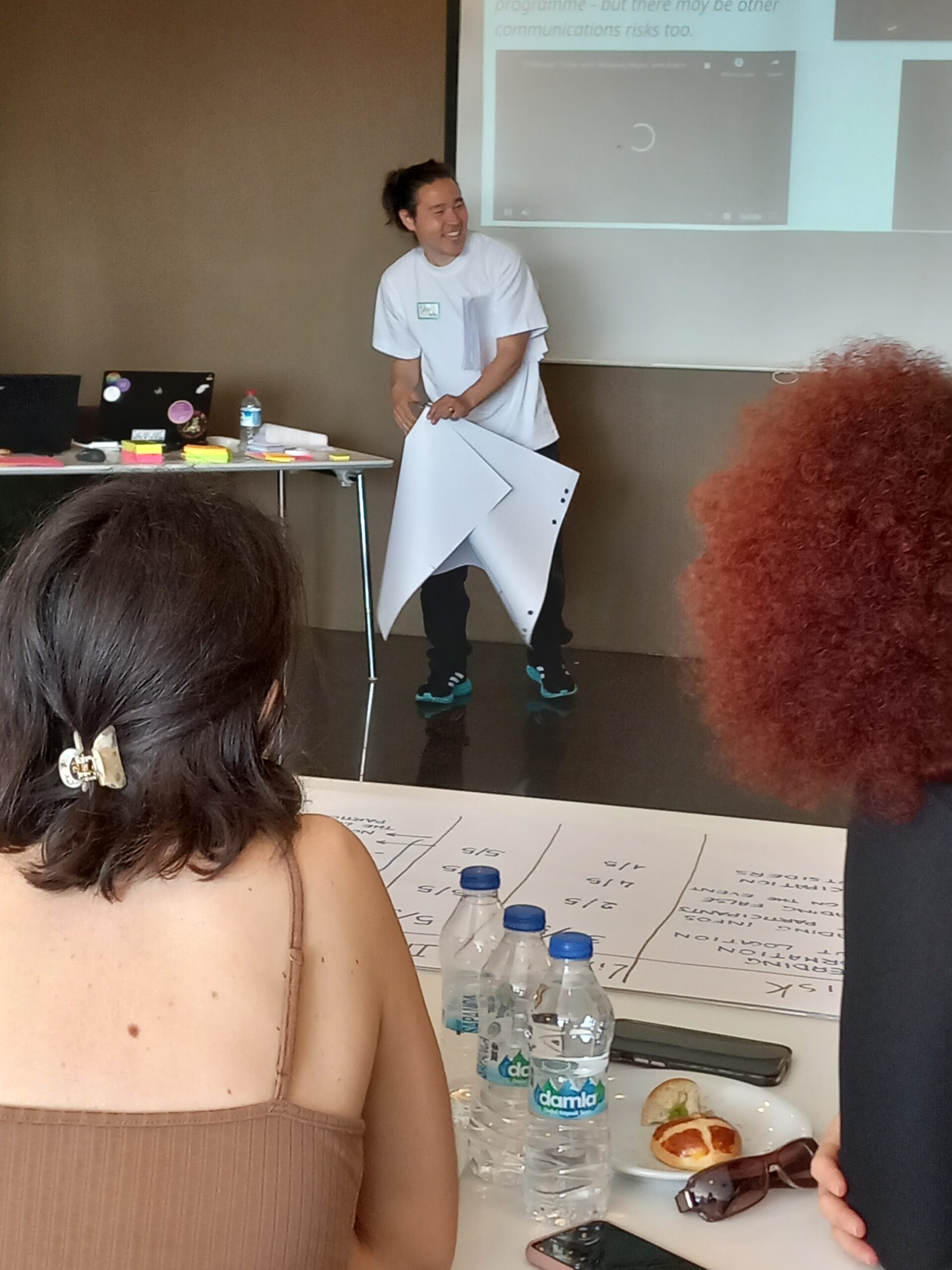A strategic shift in our social media presence
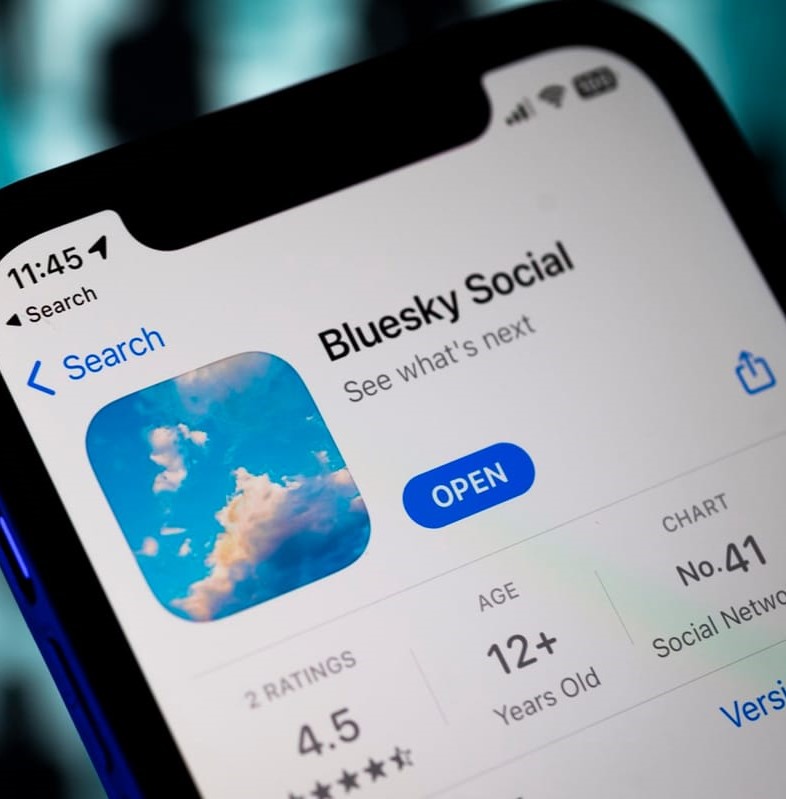
After a thorough review, we have made the decision to discontinue posting to our X account with immediate effect.
As an organisation dedicated to supporting LGBTI activist organisations in Europe and Central Asia, and advocating on behalf of the LGBTI movement, at ILGA-Europe we value the role social media can play in cultivating connection, raising awareness, and driving positive change. At the same time, we are mindful of growing concerns about the increasingly divisive nature of certain platforms, including X, and the challenges this poses for creating safe and impactful spaces for engagement.
Every organisation must carefully evaluate its social media strategy, balancing its mission with the evolving dynamics of digital platforms. After a thorough review, we have made the decision to discontinue posting to our X account with immediate effect. This was not an easy choice, but it reflects our commitment to adapting our approach in ways that best serve our members, mission, and values.
Why We’re Making This Change
We are committed to fostering meaningful conversations while not contributing to hateful narratives. We also take seriously our responsibility to create inclusive, supportive spaces. The rise of harmful content and inconsistent content moderation on X raised concerns about whether the platform aligns with our values and the needs of the LGBTI activists and communities we serve. Coupled with a significant decline in engagement and growing toxicity for our communities, we’ve found that our campaigns achieve greater impact on platforms like LinkedIn and Instagram, where there is more space for thoughtful discussions and meaningful connections.
What We Will Be Doing
As part of this strategic decision, we will be investing in a social media strategy, as part of a broader communications strategy that better aligns with our goals. We will focus on platforms like LinkedIn, Instagram and other new channels, including TikTok, Bluesky and Threads, where we can amplify nuanced messages, foster meaningful connections, and ensure safer, inclusive dialogue.
Listening, learning, and reflecting with our members and the movement will remain central to our approach as we navigate these changes together.
Staying Connected
We invite our online communities to continue engaging with us through our website, newsletter, and other platforms where we can share insights, updates, and opportunities to collaborate. Our X account will feature a pinned post explaining this change and guiding people to our other channels.
As we adapt to the evolving digital landscape, we reaffirm our commitment to creating a world where the human rights of LGBTI people are amplified, celebrated, and supported. Together, we will continue driving positive change, countering online hate, and amplifying the calls of the LGBTI movement across Europe and Central Asia.
- Keep our website in your bookmarks: https://www.ilga-europe.org/
- Subscribe to our monthly Rainbow Digest: https://www.ilga-europe.org/subscribe-to-our-newsletter/
- Follow us on Linkedin: https://www.linkedin.com/company/ilga-europe/
- Follow us on Instagram: https://instagram.com/ilgaeurope/
- Follow us on Facebook: https://www.facebook.com/ilgaeurope
- Follow us on TikTok: https://www.tiktok.com/@ilgaeurope
- Follow us on Bluesky: https://bsky.app/profile/ilgaeurope.bsky.social
- Follow us on Threads: https://www.threads.net/@ilgaeurope
- Listen to our podcasts, The Frontline: https://smartlink.ausha.co/the-frontline
Our work with activists to help build strong communications strategies
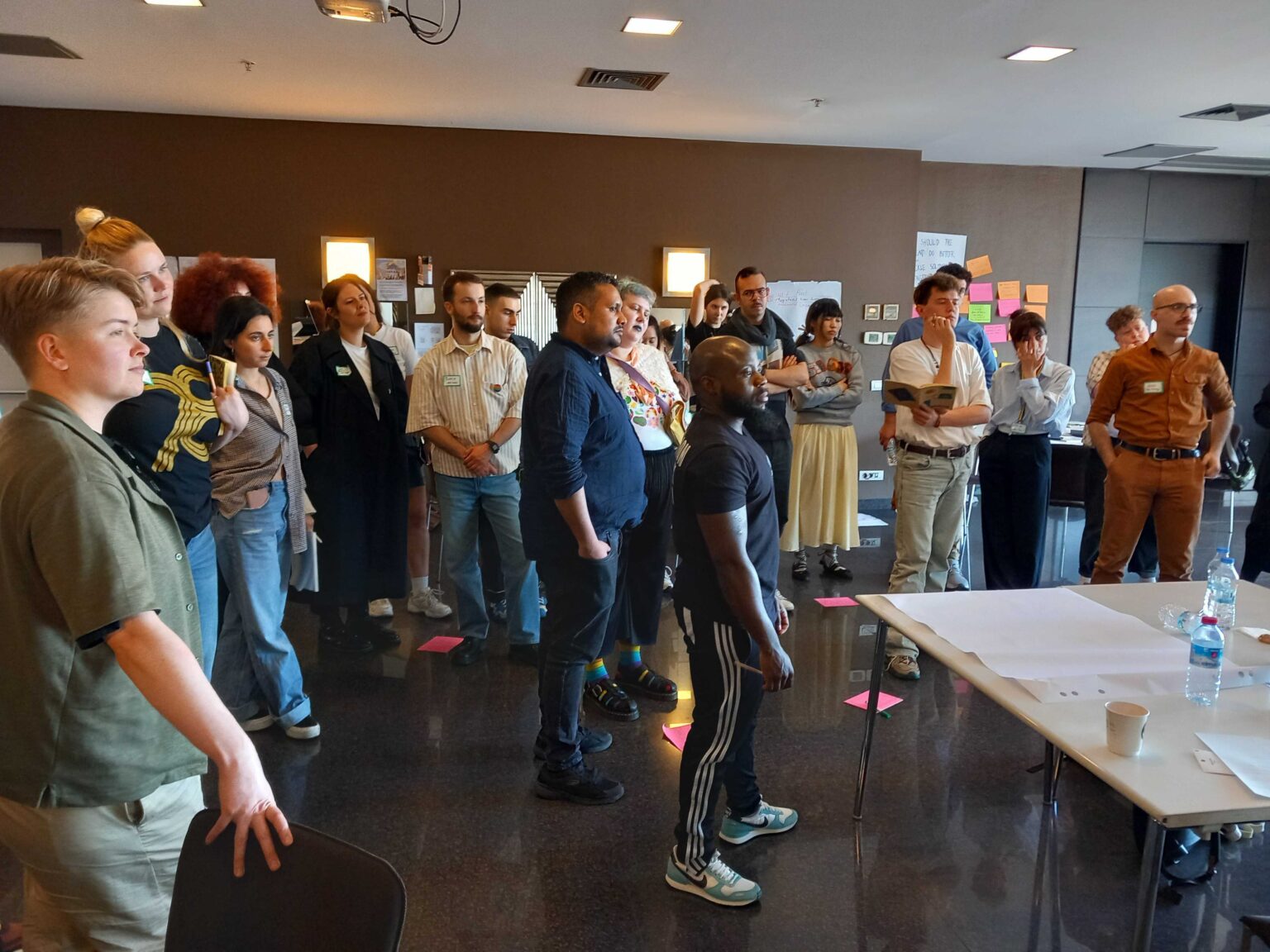
Over the past three years at ILGA-Europe we have been running a number of online Skills Boost sessions for activists who want to improve their communications skills. Recently we held two sessions on how to develop a communications strategy. Here’s what our participants learned.
During our recent online Skills Boost on communications strategies, we asked around 100 participants where they were within the cycle of a comms strategy creation. The majority of them responded with : “Thinking, but not started yet”.
Activists often face an overwhelming workload, and it can be difficult to prioritise something like a communications strategy amidst so many competing demands. Yet, having a strategy is not just another task; it is the foundation that makes all other communications more focused and effective.
Without a strategy, efforts can feel scattered or reactive, diminishing their impact. A good strategy ensures that your messaging reaches the right people, with the right message, at the right time. It is not about doing more but about working smarter and ensuring that your communications actively contribute to your organisation’s goals.
It may seem insurmountable, but it’s easy
Developing a communications strategy can feel like a big task, especially for LGBTI groups navigating limited resources and competing priorities. However, a well-thought-out strategy is more than a document—it is a tool that helps focus your efforts, align your team, and amplify your impact.
The good news is that you do not need a lengthy report or expensive consultancy to begin. What you really need are a few meaningful conversations with your team and a clear sense of where you’re heading. Here is an easy breakdown of the key elements of our Skills Boost to build a communications strategy:
Develop a four-question backbone
At its heart, a good communications strategy is about answering these four questions:
- Why? Why are we communicating? What impact are we aiming for?
- Who? Who do we need to engage, persuade, or mobilise?
- What? What stories, messages, or visuals will resonate?
- Where? Where can we best reach our audience?
These questions form the backbone of any effective strategy. By working through them together as a team, you’ll uncover what really matters and avoid getting caught up in endless, unfocused activity.
Skip the one-size-fits-all approach
Every organisation is unique, and a communications strategy should reflect this. Rather than following a generic template, craft a plan that considers your specific context, priorities, and resources.
Start by identifying what feels most urgent or significant to your team. Perhaps your focus is on strengthening advocacy, connecting more deeply with your community, or shifting public narratives. It is equally important to recognise that you do not have to tackle everything at once. Set priorities, focus on a few clear objectives, and treat your strategy as a living document that evolves with your organisation.
Fill the gaps in your current practices
A communications strategy should simplify your team’s work, not add unnecessary complexity. Think of it as a roadmap: a practical guide that clarifies your direction without overwhelming you with rigid rules.
Start by examining your current practices. What is working well? Where are the gaps? Use these insights to build a framework that streamlines your messaging, focuses your channels, and supports intentional conversations. When done well, a strategy provides clarity and confidence, making your communications more cohesive and impactful.
Begin with small steps
At its core, communications is about connection—and every connection starts with intention. Begin by gathering your team and discussing the four key questions. Even small steps can lead to significant clarity and progress.
If you need further guidance, explore ILGA-Europe’s resources on strategic communications on The Hub, ILGA-Europe’s LGBTI Resource-Sharing Centre, or reach out to us for tailored advice. Together, we can ensure your voice not only reaches the right audiences but makes a lasting impact.
Boost your communications and campaigning skills with our free, easy-access sessions for LGBTI activists
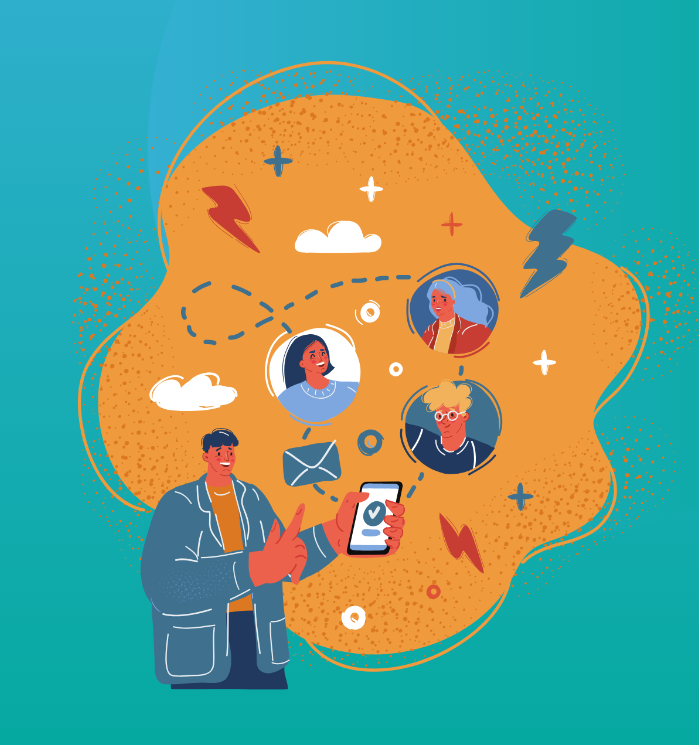
In the ever-evolving landscape of LGBTI activism, staying ahead with the right tools and strategies is essential. At ILGA-Europe we offer free training from experts in the field of strategic communications and it’s easily accessible from wherever you are. Find out more in today’s blog.
Are you taking advantage of the opportunity to access free, practical resources to enhance your communications and campaigning skills as an LGBTI activist or organisation? Our Skills Boost sessions bridge the gap between broad online resources and in-depth, hands-on coaching, offering activists practical training on topics that matter most. These sessions are designed to be engaging, relevant, and most importantly, actionable.
Whether you’re just starting or looking to upgrade your approach, our Skills Boost sessions offer expert guidance and personalised feedback, making it easier for you to implement what you learn. On top of that, there is space for peer learning, because you can give and receive feedback from other activists who are doing the same or similar work in their contexts.
Check out a few past Skills Boost sessions below, and take the opportunity to sharpen your skills and join a growing community of activists committed to making a real impact!
Skills Boost on Data Visualisation for LGBTI Communication
Communicating with visuals is more important than ever. This session focused on how LGBTI activists can transform complex data into compelling visual stories. Using data from our Rainbow Map, participants were guided through the process of creating powerful visualisations—no design experience required.
Skills Boost on Effective Fundraising Campaigns for LGBTI Activists
This session focused on creating successful fundraising campaigns targeting individual donors. The workshop provided insights into best practices and real-world examples to inspire effective fundraising efforts.
Skills Boost for LGBTI Activists: Media Interview Practice
Getting your message across in TV interviews can be daunting. This session offered practical guidance on how to prepare for media appearances, particularly in TV interviews. Participants learned about crafting messaging, handling technical aspects of interviews, and navigating difficult questions—all with a focus on personal wellbeing.
Skills Boost on Digital Ads for LGBTI Groups
Led by digital consultant Jean O’Brien, this session explored how to maximise the impact of digital ads with little or no budget. From choosing the right platform to getting the most out of Meta ads (Facebook and Instagram), the workshop provided practical strategies for effective digital campaigns, even when resources are limited.
Skills Boost: Useful Communications Strategies for LGBTI Activists
This session demystified communications strategies for LGBTI organisations. Participants explored what makes a strong communications strategy and heard from organisations that have successfully implemented their own strategies.
Are you interested in joining our next Skills Boost?
Upcoming: Skills Boost on Useful Communications Strategies for LGBTI Groups – Take It to the Next Level
Join us on Wednesday, 25 September at 12:00 CEST for a 60-minute session where Ljubljana Pride will share how they developed multiple communications strategies for different areas of their work. Learn how to update your own strategy and decide if you need more than one. Register now to take your comms skills to the next level!
Digital advertising for LGBTI activists: What we learned at the latest ILGA-Europe Skills Boost

At ILGA-Europe, one of our goals is to equip activists with new skills and knowledge to help them amplify their voices and make a meaningful impact in their communities. One of the ways we do this is through our regular online Skills Boosts. Our latest one was all about maximising the potential of digital advertising.
We are committed to empowering LGBTI activists across Europe and Central Asia through our Skills Boosts. These online sessions cover a range of critical topics such as media relations, fundraising campaigns, and communication strategies. By equipping activists with the necessary skills and knowledge, we help them amplify their voices and make a meaningful impact in their communities.
In our last Skills Boost we dove into the world of digital advertising, with a special focus on helping LGBTI organisations maximise their reach and effectiveness online. Jean O’Brien, digital consultant and founder of Digital Charity Lab, was with us to share her expertise on how LGBTI organisations can get started with digital ads. Jean is an expert in using digital channels to build support for causes, and she shared her top tips for understanding, using and testing digital ads.
1. You almost definitely need a paid ad strategy
The reach of organic content (i.e. content that’s posted for free, with no ad budget) on social media decreases every year. These channels were all built in order to sell ads, and it’s very difficult to get a good return with free activity only. You may find that some organic posts do well but then the next ones will perform badly. There’s no consistency, and you really need to be able to count on a channel to deliver, if you’re putting time into it. A majority of non-profits need some kind of budget for paid digital ads.
2. You just need enough budget to run a test campaign
If you don’t currently have a budget for ads, consider halting other activities to free up funds. For example, if you are boosting posts, stop that and allocate the budget to proper ads instead.
Aim for a budget of up to €1,000 to run a lead ad campaign (see more in point 9). Once you measure the performance of this campaign, you can make the case for more budget.
If there is genuinely no budget and no chance of getting one, then review whether you can continue with certain channels at all. If you’re putting a lot of time into organic posting on Instagram which brings in no return, that’s a waste of resources and you can consider abandoning that channel entirely.
3. Meta Ads are the best place to start
There are many options for paid digital, including Google Ads, TikTok, Meta, LinkedIn, Twitter / X, etc. These platforms all have different strengths. When you’re starting off with a small ad budget, I recommend focusing on Meta Ads, as they have the most powerful ad algorithm. The Meta platform includes ads on Facebook, Instagram and WhatsApp, so you can reach very different audiences within it.
It’s also really worth applying for the Google Grant and setting up Google Grant Ads, if you have enough resources to do two ad channels. Google donates up to $10k in search ads each month, and it’s a great channel for reaching warm audiences. Find out more in Digital Charity Lab’s online course in Google Grant Ads.
4. Learn how to run your own Meta campaigns
If you always hire agencies to run your Meta campaigns, it makes each campaign more expensive. Learning how to run campaigns and do split-testing yourself, will get you much better value with your Meta Ads. Plus it’s great professional development for your team.
5. Understand Meta Ad objectives
Meta Ads allow you to choose different ‘objectives’ – you’ll define what you want to achieve from your campaign. It’s very specific and literal so be careful: if you choose ‘video views’, Meta will just find people who watch a lot of videos. If you want people to watch a video and then take an action, you’re better off choosing a conversion objective instead. Meta has absolutely immense amounts of data on its users, and it knows which people are most likely to take an action. Choose your campaign objectives with care: they’re really important, and easy to get wrong. If you don’t tell Meta the right strategy, it won’t find the right people.
6. Every campaign needs 50 results in order to really perform
This is how Meta Ads platform works:
- You set an objective for your campaign (such as leads; or conversions like purchases or donations)
- Meta tries to find the first 50 results. If it’s a lead campaign, it needs 50 leads. If it’s a donations campaign, it needs 50 donations.
- Once it has the first 50, it then uses those results to build a statistical model, to find more people like the first 50. This is when the campaign starts ‘optimising’ – i.e., finding the best audiences for the ads and the best cost per result.
- If Meta can’t find the first 50 results, it shows ‘learning limited’ and the campaign will not perform as well.
When you’re running a Meta Ad campaign, you need to give it enough budget and time to find the first 50 results. If you don’t, the campaign won’t perform well. This obviously makes things more complicated when it comes to objectives like donations: it can cost a lot of money to get 50 donations. That’s why I recommend starting with a lead ad campaign (see more in point 9).
7. Go bigger than you may be used to – bigger budgets, longer run times, broad audience
Non-profits often make the mistake of splitting their Meta Ads budget across lots of very small campaigns – €100 here, €75 there, 2 days here, a week there. A much better way to spend your budget is to consolidate it into one lead campaign (see more in point 9). It means you’ll be able to get the first 50 results, and do proper creative split testing to get a really good cost per result. Once you have your best creative, you can run the ads for a long time on a small daily budget, constantly growing your mailing list and getting really good value out of the campaign.
Try broad audience targeting when you’re doing your lead campaign. The Meta algorithm is really good at finding the right people.
8. Creative split testing is crucial
The more creative variations you use, the more chances you give Meta to find the relevant people. Meta makes split testing really easy, with its ‘dynamic creative’ ad format.
The way many charities work is: they spend a lot of time developing the look and feel of a campaign, create a few core designs based on the creative concept, and then just use those designs in their Meta ads. But if you start by testing more images, and more that are significantly different, you’ll be pleasantly surprised with the results.
Test five headlines, five primary texts and at least five images in each campaign. Meta will give you the exact breakdown of which are achieving the most volume and the best cost. Once you know the best performers, you can remove the ones that aren’t working and continue the campaign with the best creative.
9. A lead campaign is a great place to start
Lead ads are a very effective ad format on Meta, that allow you to capture contact details directly on Facebook and Instagram. Meta’s lead forms are very user-friendly and quick for people to fill in.
With a lead campaign, you can capture people’s contact information and move them to a platform where it’s easier and cheaper to contact them – such as email or SMS. Once you have contact details for a supporter, you have multiple opportunities to talk to them. You can develop a long term relationship, and get long term value from the campaign.
Lead campaigns will work with small budgets – you can run an effective lead campaign for around €1,000.
Start learning and testing!
There is definitely a great opportunity for LGBTI organisations to use Meta Ads to build support. You just need to ensure that the budget is adequate, and that you’re supported to learn the platform and fully understand good strategy before you’re expected to bring in results.
Sources for learning more about Meta Ads
- Join ILGA-Europe’s private communications support group to get access to the recording, slidedeck, and 46-page guide from the Skills Boost on Digital Ads which Jean ran for LGBTI activists in June 2024.
- Jon Loomer – Meta Ads expert who shares extremely useful information on his website
- Digital Charity Lab – free and affordable digital skill-building for non-profits
Don’t miss our next Skill Boost! Join our Facebook group Communications support group for LGBTI activists where we regularly post upcoming opportunities to boost your communication skills.
Keep Calm and Communicate: LGBTI Activists Share Crisis Communication Tips
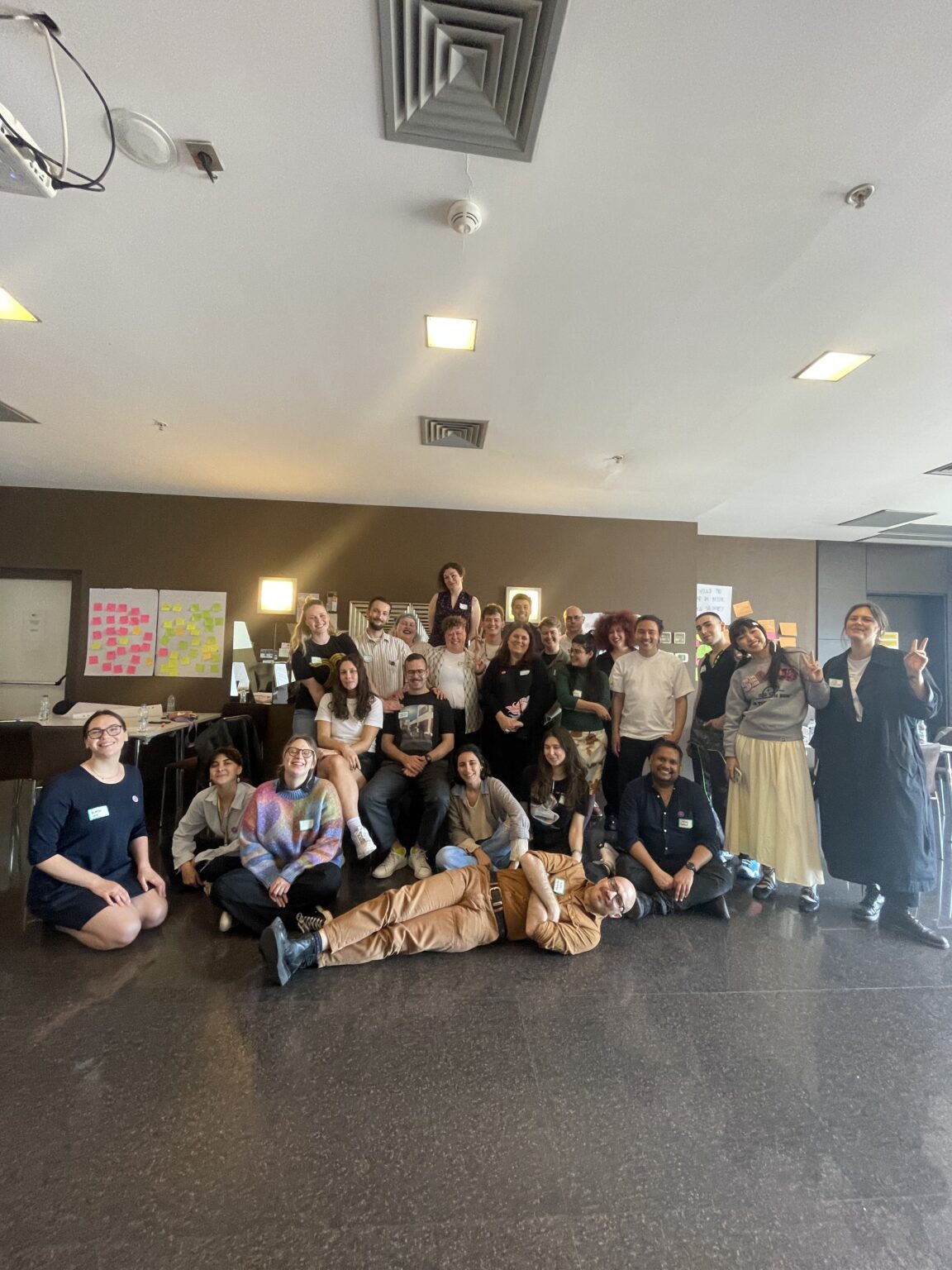
Last month we brought together 25 activists from over 15 countries to discuss and learn all about communicating in times of crisis. With Pride season upon us, and the challenges Pride events can bring for queer activists and organisers, this blog presents the key takeaways.
Pride season is here, and the LGBTI community is busy getting ready to both celebrate and assert visibility across Europe. But we are living through a time in many countries when LGBTI people are being scapegoated, which brings challenges amid the celebrations for many Pride organisers.
In May, ILGA-Europe hosted a two-day learning event on crisis communication for LGBTI organisations from across Europe and Central Asia, which we entitled ‘Get Ready!’. This gathering was an opportunity for 25 activists from over 15 countries to come together and address the complex challenges they face when communicating to their communities, the media and other stakeholders at times of crisis.
The group of passionate activists from diverse backgrounds demonstrated the power of collaboration during our time together. This created a profound sense of solidarity and mutual understanding and the room was alive with the exchange of expertise, self-care tips, and strategic ideas, leading to new collaborations and strengthened networks.
During our discussions we learned that the diversity of challenges faced by LGBTI organisations in crisis communication is vast and complex, but the participants highlighted five key issues that are similar across different countries and contexts. They are:
Balancing conflicting interests
Organisations often operate in regions with significant political and social tensions. This requires carefully navigating their messaging to address both local and international audiences without alienating either.
Fragmentation and internal conflicts
Many movements suffer from internal fragmentation, making unified communication difficult. Differing priorities and approaches within the community can lead to inconsistent messaging and weakened responses during crises.
Targeted campaigns and opposition
Advocacy campaigns frequently attract opposition from various groups, including TERFs (trans-exclusionary radical feminists) and anti-gender movements. These groups often launch coordinated attacks, which leads to the necessity of having both proactive and reactive strategies to mitigate their impact and protect the community.
Social media and digital threats
The digital landscape presents unique challenges, from social media posts being reported and accounts being suspended to full-blown smear campaigns. Organisations must be adept at digital crisis management, swiftly countering misinformation and protecting their online presence.
Polarisation and backlash
In many regions, the rising tide of anti-gender rhetoric and the instrumentalisation of LGBTI issues by political actors create a highly polarised environment. Navigating this landscape requires not only strong messaging but also the ability to build and maintain alliances in a hostile atmosphere.
These challenges illustrate the layered nature of crisis communication within the LGBTI activism and advocacy space. Organisations are called upon develop tailored strategies to address unique circumstances in their own contexts, while drawing on shared experiences and collective wisdom. It’s also important to acknowledge that security risks, particularly around public events like Pride marches, heavily burden activists. Although these are not primarily crises, they significantly impact the overall environment in which LGBTI organisations operate.
Key Tips and Tricks for Effective Crisis Communication
During the training, activists shared a wealth of strategies for tackling these challenges, which we captured on video. We asked participants to remember the moments of stress, panic and hard times they experienced, and then to envision talking to a young activist facing a communication crisis for the first time. The result is a collection of universal and empowering tips by activists for activists to help keep your head up during a crisis.
1. Define your audience
Tailor your message to ensure it resonates with your specific target audience, such as sympathetic media outlets, supportive community groups, and potential allies within the general public.
2. Know your community
While it’s important to communicate with the broader public, never forget that your primary responsibility is to support and uplift the LGBTI community. Your people need to know you have their back.
3. Rely on your support network
The strength of the LGBTI movement lies in its solidarity. Your chosen family, friends, mentors, and colleagues are invaluable resources in times of crisis. They can mentor you, talk things through, offer help and comfort, and step in if you need to step back. Sharing the burden of these responsibilities can lighten the load significantly.
4. Stand in solidarity with other LGBTI organisations
In a crisis, consider others who are also impacted and their potential responses and strategies. Collaborating with other LGBTI organisations, showing solidarity, mutual support, and a unified response will strengthen our collective resilience.
5. Maintain a healthy distance
LGBTI activism often intertwines with personal identity, making it essential to keep a clear boundary between doing the work and living your life to avoid burnout. Remember that you are more than your work and activism, and it’s okay to step back when necessary.
6. Take It step-by-step
Crisis situations can be overwhelming, but it’s crucial to stay focused on your message. Clear, calm communication is key to navigating through the storm.
7. Practice in private, be prepared in public
Doing a roleplay of a likely communications crisis situation can help you practice and take some stress out of a real situation. The Get Ready! participants took part in an exercise which tested their preparation, monitoring, diagnosis, and response to a hypothetical crisis. ILGA-Europe is developing this exercise to provide a resource to more LGBTI groups who want to prepare for communications crises. Join our Facebook group Communications support group for LGBTI activists to be up to date with any upcoming opportunities.
Creating our Annual Conference logo
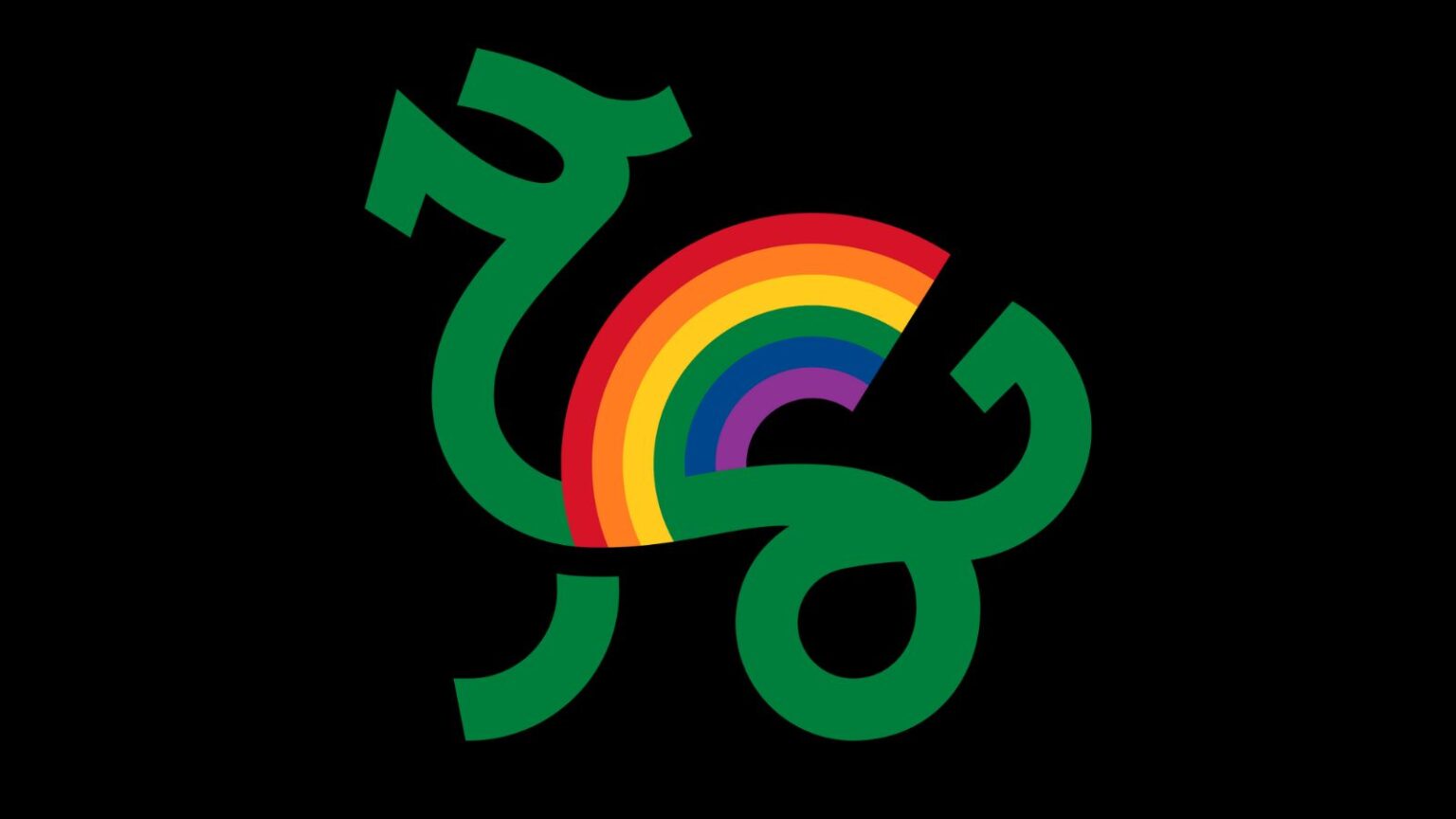
As we get ready for our Annual Conference in October, we’re excited to share the collaborative design process for our Ljubljana 2023 visual identity.
Every year ILGA-Europe bring our Annual Conference to a different city in Europe, and every year we create a new logo to single it out as an important event in its own right, rather than simply another annual gathering of activists. And every year, we begin the work by consulting with our member organisations on what the elements might be that express the identities of the countries and cities our Conference is being held in. We ask them too to recommend designers in the hope that we can source local talent.
Developing the concept
This year we worked with Studio 360, an amazing creative agency in Ljubljana. We asked for a logo that combined a symbol of the city or of Slovenia, which reflected both the strength of our movement and our title for this year’s conference, “Rising To The Moment”. Studio 360 made two proposals for key symbols, one using of the national symbol of Slovenia which is represented on the country’s flag, Mount Triglav, and the other using Ljubljana’s city emblem, the dragon.
Our designer first combined a creative imagining of an existing modern statue of a dragon in Ljubljana, combining colours from the rainbow flag with the dragon’s wings to suggest the LGBTI movement rising.
The second proposal took the peaks of Mount Triglav, combining them with the rainbow colours and a symbol for rising, to again tie in with the conference title.
How we made our decision
Initially we liked the second version of the logo, based on Mount Triglav’s peaks. We felt it was a strong symbol of upwards movement, of ‘rising’, and it’s simplicity appealed to us.
Then we went through a process of consultation, with the Conference organising team and with our hosts. Their feedback was unanimously different. It was felt that the Mount Triglav version of the logo was more corporate than community, that it was harder to really identify the local symbolism, and that it wasn’t as pleasing to look at. It was also felt that the dragon was a more identifiable Slovenian emblem. We went with the feedback and Studio 360 further developed the logo, along with the conference title until we came up with the final design.
We’re really delighted with the final result, which we think both encapsulates the spirit of our Conference this year and represents an iconic, historic emblem of the beautiful city of Ljubljana. We’re looking forward to joining 450 activists from across Europe and Central Asia there this coming October for what promises to be a Conference to remember!
2040 Looking back: Future Activism Interviews
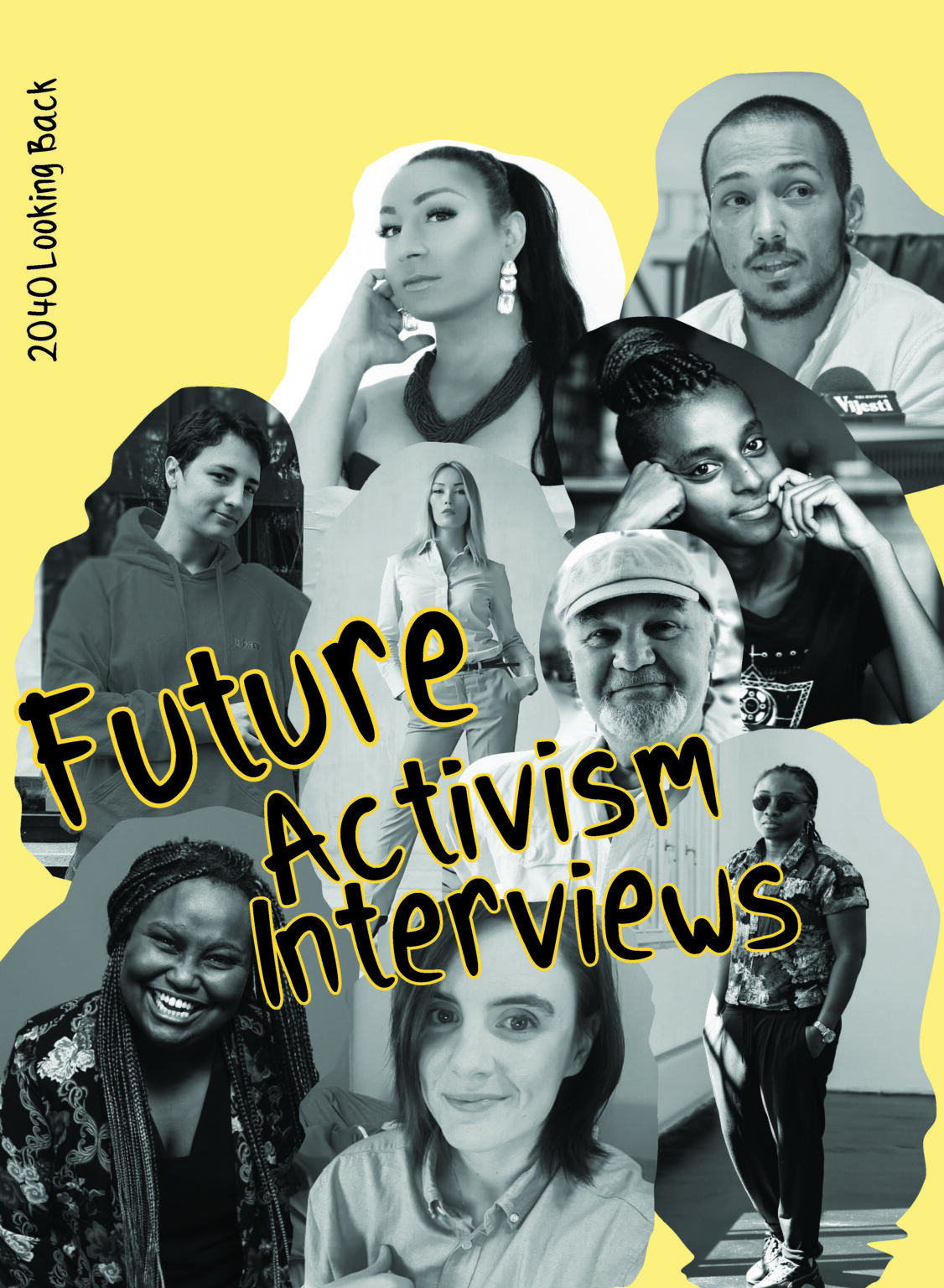
Have a look at ILGA-Europe’s zine of ‘speculative futures’ interviews, set in the year 2040, with powerful LGBTI activists from across the region.
LGBTI Activism 101: Connecting with the Media

It’s important that the media explores the issues that affect our communities in a realistic way, but for many LGBTI activists, getting journalists interested can seem difficult, if not impossible. Our latest activism Skills Boost sessions explored connecting to the media. Here’s what our participants learned.
All LGBTI activists know that communication is power. It is a crucial tool for making change to advance our rights. But, with so many things happening in the world, getting the real issues that LGBTI people face into the headlines can prove difficult, especially since journalists are only interested in certain stories about our communities, like sudden tragedies or new anti-LGBTI laws.
As part of our current Strategic Communications programme, our latest Skills Boost sessions focused on media relations. The worldwide media not only brings us daily news but also sets the agenda and frames the narrative about LGBTI people and rights. Journalists and editors are the ones who ultimately decide what stories are told, and which ones are left out.
So, to get stories that aren’t headline-grabbing out there, building a good relationship with journalists is vital for activists. However, the ever-changing media landscape, activist workloads, juggling advocacy and community needs, and emergencies that arise so often, make it difficult for activists to connect, and stay connected with media representatives.
As part of the Skills Boost, ILGA-Europe’s media officer, Ana Muñoz walked participants through a part of her daily routine. Here are some of the good practices Ana has learnt over the past three years in the job, which might help you step up your media game.
Daily news-skim
Start your day going through the news to have a sense of what is going on in the world and in your communities and locality. This doesn’t mean you have to read all the news. Subscribe to newsletters that are relevant to you and your work and set up alerts to monitor news about LGBTI rights, both across the region and in your country and locality. Also set up alerts for mentions of your organisation. There are paid tools to monitor the news, but there are also free options like Google Alerts. Curate your social media feeds so they show you what you need to see and what is useful for your work. For example, make sure you follow on Twitter (or Mastodon!) the journalists and media outlets that are right for you, so you can stay on top of the news and understand what gets journalists’ attention.
Share what you pick up
Once you’ve scanned and spotted news items that are relevant to your organisation, you should share them with your colleagues across the organisation. A decade ago, you may have delivered a daily or weekly news clipping report but now there are platforms that allow you to share links in an immediate but organised manner. At ILGA-Europe we use a cross-organisational communications tool called Slack, which is either discounted or free for not-for-profits. But you can share the headlines and links on email, if you prefer. Sharing daily updates ensures that your teams stay on top on things and can evaluate possible responses to the media in advance.
Talk to journalists
Journalists are real people too, and they need stories to keep them in business. Like all human beings, they also make mistakes. If you see a typo in your organisation’s name (this happens with ILGA-Europe regularly), take it as an opportunity to introduce yourself and the work you do. See something misreported, inaccurate data or a quote you gave out of reported out of context? Email the journalist and tell them about it, in a polite way. Journalists usually appreciate feedback so they can do their jobs better, but they also like to receive feedback that is constructive rather than simply a complaint. Moreover, they will be happy to enlarge their list of contacts!
Create a media database
You will have many first conversations with journalists, the hard part is to maintain those relations. To prevent your relations disappearing into thin air, build a database and update it regularly. Keep in contact with those journalists when stories arise that you think they may be interested in, sending them a paragraph pitch. Or send them your press releases. Whether it is through a fancy mailing tool (which can be expensive) or a simple excel spreadsheet or mailing group on email, make sure to note down those names and emails. If you make a good connection with a journalist, ask them to let you know if they are moving on to another publication. (Journalists move all the time.) That way you will begin to have a way of figuring out who moves where.
Scan the horizon
If you read the news to understand what has just happened, horizon scanning techniques give you an insight of what is coming next. Bookmark anniversaries of important LGBTI-related events in your country, keep an eye on international days coming up, and gain access to journalists’ and parliamentarians ‘forward planners’. For example, here you can check the European Parliament’s agenda of the week. The launch of official statistics about LGBTI people and issues, such as the ILGA-Europe Rainbow Map, or TGEU trans rights map might be interesting for your media and communications strategies too. Knowing things in advance enables you to prepare accordingly. For example, journalists may be interested in speaking to LGBTI couples on the anniversary of marriage equality in your country. You can make horizon scanning a regular agenda point in your monthly meetings.
If you are an LGBTI activist in Europe and Central Asia, join our private communications support group on Facebook where the idea for this Skills Boost came up in the first place, and where every week activists and ILGA-Europe staff discuss videos, social media, narrative, and other communications challenges. Remember you can also join The Hub, ILGA-Europe’s LGBTI resource-sharing centre, which has lots of resources for effective communications.
The World Cup ‘One Love’ Controversy: How the Media Got it Wrong
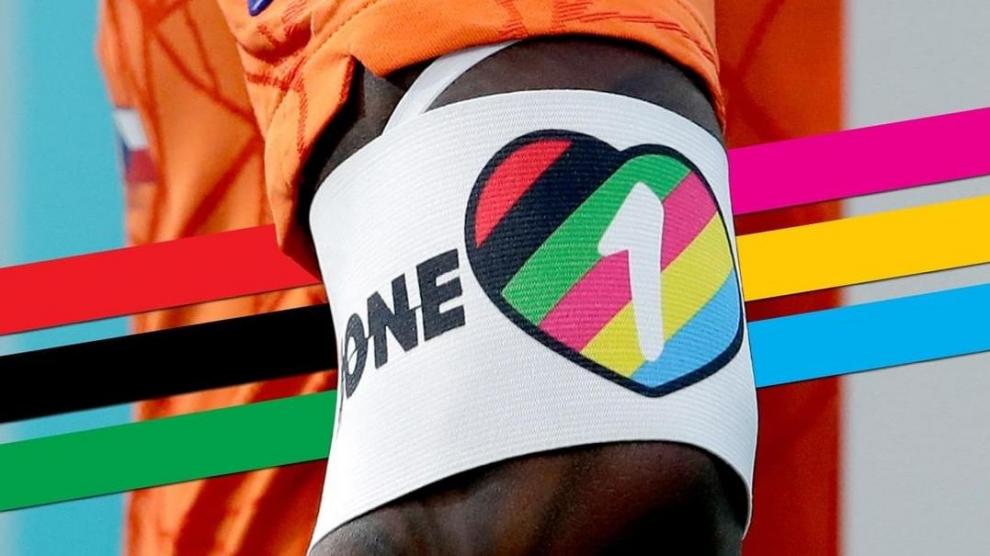
As the World Cup kicked off this year, the big news story became about FIFA banning of ‘One Love’ armbands meant to show support for persecuted LGBTI people in Qatar. But it created a dangerous “us versus them” narrative, says our Executive Director, Evelyne Paradis.
When FIFA effectively banned all European football players from wearing the ‘One Love’ armband while on the field at the World Cup 2022, it became the dominant news story as the games began. By wearing the armband, players and teams intended to highlight the dire human rights situation for LGBTI people in Qatar, where men who have sex with other men can be imprisoned, or at worst stoned to death. However noble the cause, though, according to our guests on our latest podcast episode, Evelyne Paradis, Executive Director of ILGA-Europe, Ryan Heath, Editorial Director with Politico and Gurchaten Sandhu, Director of Programmes at ILGA World, the ‘One Love’ armband story created a tricky situation for LGBTI communities.
“On one hand, issues faced by LGBTI communities in Qatar needed to be named,” says Evelyne. “You need to react to a stand like FIFA’s. However, the amount of attention was striking, if we think that other pressing issues, like the situation of migrant workers or of women’s rights, which have had little or no attention from media and governments.”
The trouble, she adds, is that we are “constantly putting everything in silos and not looking at the broader picture, and why is it that this one issue is always singled out? Women’s rights, migrant worker’s rights, LGBTI rights… there are so many issues in Qatar that demand the world’s attention. However, only LGBTI rights were in the spotlight. While this could look only beneficial for LGBTI people, in reality disconnecting LGBTI rights from other human rights presents a number of risks in the long run.”
“What we continue to see is a hierarchy of rights. Had we talked about human rights as indivisible, inalienable, we wouldn’t have been in this situation.”
Gurchaten Sandhu
ILGA World’s Gurchaten agrees. “What we continue to see is a hierarchy of rights. Had we talked about human rights as indivisible, inalienable, we wouldn’t have been in this situation.”
Yet, LGBTI communities have been marginalised in the reporting of sports for so long, and Politico’s Ryan Heath, believes that for many journalists, reporting of the ‘One Love’ armband controversy is trying to reverse invisibility.
“There has been an historical underrepresentation of these issues,” he says. “LGBTQI communities have been marginalised in sporting arenas. Now that we are more aware of that, or that people in media outlets are more aware of that, it becomes this over reaction that doesn’t consider other elements.
“It’s the wrong approach, but it’s trying to fix a bigger wrong in the past as well.”
The cost of oversimplification
“It’s oversimplified,” Evelyne adds. “Reporting like this tends to gloss over from the complexity of issues that communities face and that’s the problem at the moment, despite the good intention behind it.
“In the same week, the media were talking about the Colorado shootings and the armband. Yes, the media talks about LGBTI issues where it’s a real tragedy, when there’s violence or when there’s something that can be commercialised, but we know the lives of people are all between the two sides of that spectrum. Why is it so difficult to continue to talk about the situation of LGBTI people in Ukraine at the moment, for instance?
“Reporting like this tends to gloss over from the complexity of issues that communities face and that’s the problem at the moment, despite the good intention behind it.”
Evelyne Paradis
“The framing always is ‘either or’. Like, either you are a supporter of LGBTI equality or you are not. This doesn’t help us to get into the conversations. It doesn’t help to talk about prejudices, misgivings, lack of information people have.”
“The upside of things like the One Love armband controversy is that it gives attention to the issues,’ says Gurchaten, ‘but there is a moral and ethical responsibility in the way it’s reported. The issue is not black and white, there are several complexities and layers to the issue of LGBQ+ people’s rights. We haven’t had a framing to have that discussion.’
For Ryan, the problem is the attention span in a digital world. “You can write 40 paragraphs, that doesn’t mean anyone is going to read them,” he says. “The struggle with smaller and smaller is not going to go away in this internet-heavy media space we live in.”
Looking to the future
“We pick a lot on the media, but what kind of stories are we feeding into the media,” Evelyne asks, while Gurchaten remarks that ‘us versus them’ narratives are also damaging the LGBTI movement itself, “getting us distracted from the real issues, for example, when it comes to trans rights across the world.”
According to Ryan, “Journalists that are interested in covering LGBTI issues are now more visible, so it’s also easier for LGBTI activists to reach out. As with any of us, journalists also learn and evolve and can do justice to these stories in the future. We don’t move forward in a linear way. These are conversations that need to continue happening.”
Ryan ends on a hopeful note. “People [in the media] want to do their jobs right. The more conversations we have with them, the more progress we will get.”
“It’s the wrong approach, but it’s trying to fix a bigger wrong in the past as well.”
Ryan Heath
ILGA-Europe publishes new guidelines to equip journalists covering LGBTI issues
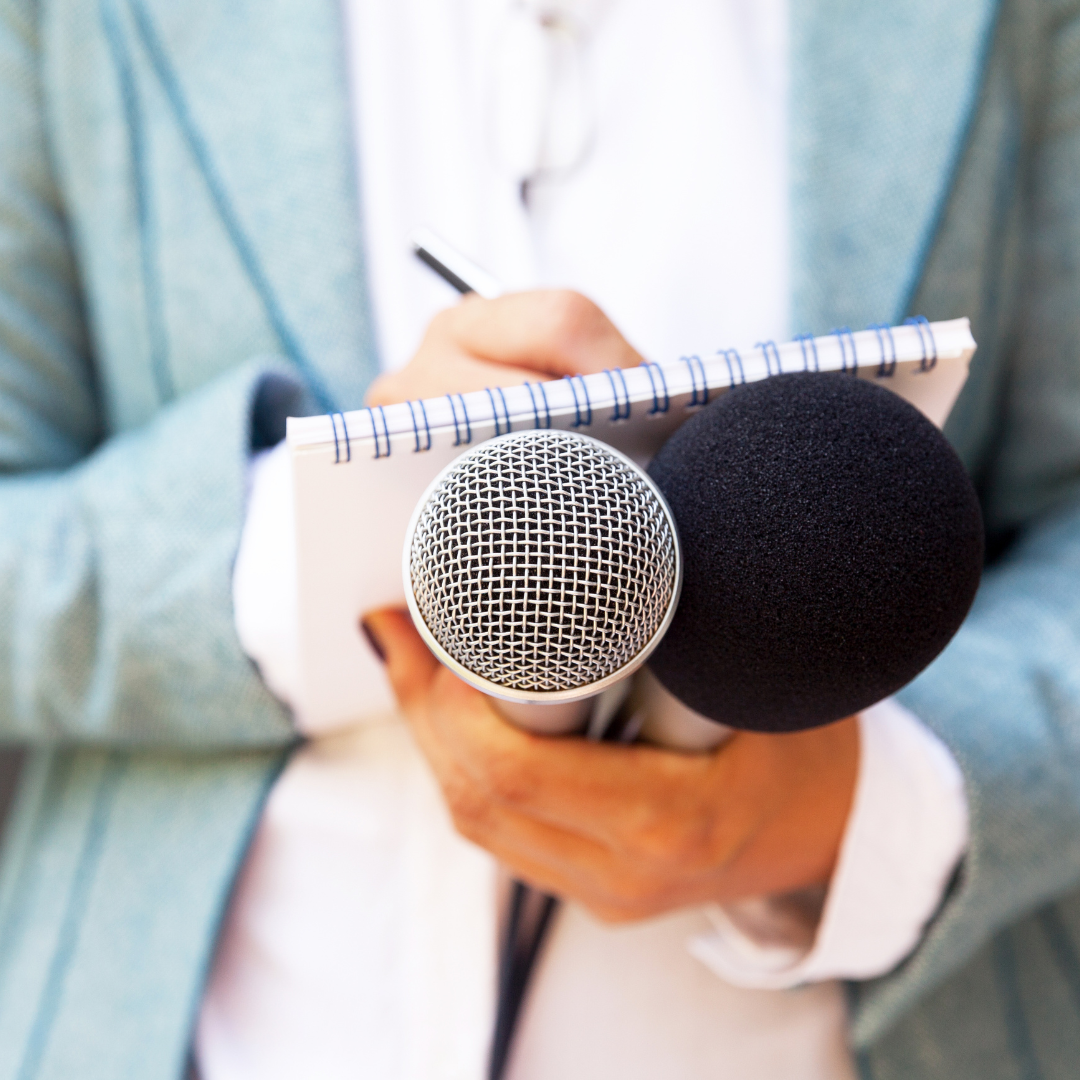
ILGA-Europe’s Guidelines for Journalists is a set of clear recommendations in the form of ‘do’s and don’ts’ on how to cover LGBTI-related people and news, for media professionals who seek to be up to date on representations.
ILGA-Europe has just published our ‘Guidelines for Journalists’, an information document with recommendations for media professionals reporting on LGBTI issues, people and communities. The guide aims to contribute to the quality and pluralism of the media landscape in Europe and Central Asia, and to support the work of journalists on the ground, especially of those for whom LGBTI-related news are not their main beat.
Divided in four ‘do’s and don’ts’ sections, journalists will find practical advice on how to report on the human rights of LGBTI people, how to talk to and about LGBTI subjects, language and pronouns, and specific recommendations for developing stories that involve trans and intersex people. Finally, there is as list of essential resources with LGBTI-related data and inspirational examples of media pieces.
According to ILGA-Europe’s Communications Director, Brian Finnegan, “These guidelines are particularly relevant in the current context of rising anti-LGBTI and anti-gender forces, official hate speech in countries across Europe and the world, and the introduction of new legislation that backslides on the rights of LGBTI people in some European countries. The marginalisation of LGBTI people is not isolated to a minority, but rather impact our societies at large and showcases health or lack thereof in our democratic systems. This is why good journalism on LGBTI issues news is needed. These guidelines aim to support this, for the better of all.”
COVID-19: How to communicate clearly as an LGBTI group

The COVID-19 crisis situation is changing every day, and as an LGBTI organisation you are going to want to keep your audience updated about what specifically matters to them. ILGA-Europe’s strategic communications consultant, Sho Konno, gives his key advice for communicating at this time.
As the situation with the novel coronavirus (COVID-19) develops on a daily basis, one of the most important tasks for any LGBTI group is to communicate with our community and other audiences. This guide is about how to take those first steps for your initial communication, and where to get more support afterwards, as clear communication will be needed regularly through this crisis.
Please note: this is not a guide about how to make decisions or adapt your activities during the COVID-19 crisis (click here for our tips on ‘rethinking 2020 for activist organisations). Rather it’s a guide about how to clearly communicate the decisions you’ve made and the activities you have become engaged in during this time.
1. Be brief
- Give a snapshot of what you are going to tell us. Does the title of your post just say ‘COVID-19 info’ or does it tell us what that info is about? Does the first line of your email tell us what is in the rest of the email? It’s important to give people a clear snapshot of what you are going to say.
- What’s new and what do we need to know first? If someone doesn’t scroll down, will they see your main message? Health and safety generally goes first.
- Be specific about and for the LGBTI community. Your audience is not expecting you to replicate general advice from the government to everybody. Unless you are prevented by specific threats, address lesbian, gay, bisexual, transgender and intersex people explicitly with the specific messages you have for them and their communities.
- What kind of updates will you give and where can we find them? It is sadly unlikely you will only have to communicate once, so set the expectation now that you will give regular updates, and tell people where they can find them.
2. Focus on the facts
- Give specific directions based on the local health guidance. Do not assume everybody is watching the news as much as you are, always link to the official guidance and then explain what that means for your context.
- Tell people what you do not know yet. Do not be tempted to think ‘we haven’t decided this yet so let’s just leave it out’. It is better to at least acknowledge that something is important to your audience but you do not have details yet, and that you will update them.
- Put a date on it. If it is a web page, for instance, it might be read at a later date. With a daily changing situation, it’s important to clearly date your communication, so people are clear whether it’s up-to-date.
- Don’t over-promise. For example, saying that every activity will happen “after things go back to normal” or will be transferred online may set false expectations. If you communicate your hopes but do not make promises, your audience should understand.
- Be clear why they should click on links. Linking to other resources is good, but if you are sending people to other sites then give them a quick explanation of what you are recommending in it. Don’t pass the work to your audience.
3. Stay human
- Talk about ‘we’ and ‘us’. You do this work and your audience supports you because of solidarity and a desire to fight for people. This is as good a time as any to simply say that and remind yourself and your audience about our shared purpose.
- It’s okay to say things are difficult. Whether it is funding, logistics or your team’s own health, do not feel like you have to ‘appear strong’. Recognising challenges and saying how you hope to deal with them is what true resilience looks like. Your audience will empathise and may have ideas of how to help.
- A personal touch is great. You are a human writing this communication, so allow yourself to include a bit of your personality or humour, like this LGBT foundation, which added a message of trans rights to hand-washing advice.
4. Test it from your audience’s perspective
- Get at least one person who did not make the draft to read the draft. Taking different perspectives on board can lead to clearer content.
- Imagine what steps your audience has to take. You are focusing on drafting the web page, but how do they get to it? What if they actually first find you through your website’s homepage, the voicemail on your office phones, or the description text on your Twitter/Instagram bio? And how are you proactively making sure it reaches the people who need to see it?
- Repeat one core message, even if you change the details. You may have updates to your webpage in future, or specific announcements to make on social media, but remember that for some of your audience this will be the first message they see, so try to always include a repetition or link to your original core message. And if you change that core message, update it in case someone only sees the first message (also see ‘Put a date on it’ earlier).
Here is a good example of COVID-19 communication from a small organisation:
What makes it good?
- It’s very short! Bullet points help our eyes to scan it quickly.
- There is specific direction on how the local official health guidance relates to their activities.
- It tells people what they probably want to know most urgently (‘Do I still have to submit by the deadline?’, ‘Do I have to give a refund for the cancelled event?’)
- It tells people where to get updates and how to keep in contact.
- It still includes a human message, but at the end, instead of a long philosophical piece of writing that you have to read past to get to the details.
What could be better
- The ‘COVID-19 Updates’ webpage that this newsletter links to lists all updates chronologically. This is helpful if someone returns to the page, but what if someone is reading it for the first time? Try to make sure any ‘COVID-19’ message or link has your main message summarised or linked to right at the top.
Maybe we will go ‘back to normal’ soon, but we should be prepared for a ‘new normal’ for potentially months to come. After you have made your initial communication, you can set up processes and strategies that will prepare you better for this crisis and other crises in future. Here are some resources that will be helpful in the longer run:
- A coronavirus crisis comms best practice guide (Prosper Strategies) Includes risk assessment, internal comms, and stakeholder/employee/services communication.
- Crisis comms for charities (Charity Comms) A more general guide with practical steps for preparing for future crises, especially ones that affect your reputation.
- Dealing with disinformation (Blueprints for Change) A crowd-sourced Google Doc with the latest tips from campaigns facing deliberate disinformation.
COVID-19 and digital security: How LGBTI activists can safely work online

While the opponents of LGBTI equality might also be overwhelmed with COVID-19 and focus their attention less on LGBTI groups right now, the digital footprints we leave today will still be around for a long time to come, which could make us more vulnerable after the crisis is over. So, now that most of our activities have moved online, how do we stay safe and secure? Here are tools and tips from the ILGA-Europe Programmes & Policy team.
As the coronavirus pandemic has taken us all by surprise, and we’ve all found ourselves isolating and working from our homes, the ways in which we communicate have drastically changed and we have to adapt quickly. Although many of us were already acclimatised to communicating digitally, moving 100 per cent of our daily work to the online sphere has been challenging in already complicated contexts.
For LGBTI activist organisiations, it is important to keep in mind that safety comes first. While our opponents might also be overwhelmed with Covid-19, the digital footprints we leave today will still be around for a long time to come. The following tips and tools on how your activist organisation and work can move its communication online are lead by the principle of online safety
Here’s how to quickly and safely reshape the work with your team without losing time and resources.
1. Group Communication
For group chats, one-to-one video and audio quick calls, you can use various apps on your cell phone. The following apps facilitate group meetings and here are the safety elements you need to bear in mind:
Remember that some of these apps are linked to your cellphone number. When you have sensitive conversations, you may want to be able to delete conversations for everyone in the app. Signal, WhatsApp, Viber allow you to do that, while Wire also allows you to write self-destructing messages.
You can find detailed information here on these and additional apps.
For longer conversations with your teams, it is probably easier to use apps that are available on your computer or tablet. Most of the following are also available on your phone, but generally harder to operate there.
In case you plan video calls and sensitive aspects may or may not come into discussion, please follow some simple rules:
I. Always set a password to the meeting.
II. Avoid sharing a the link to the meeting in a public online space as anyone who has the link can join the meeting.
III. Ask participants to introduce themselves verbally, preferably with video (later you can mute and/or turn the cameras off).
IV. If you see suspicious participants joining (not responding to questions, sharing unsolicited content, etc.) close the meeting for everyone and start a new one.
For those using zoom, besides the above rules, there are some specific technical aspects that can improve the safety of your calls:
I. Change screensharing to “Host Only”.
II. Disable “Join Before Host”.
III. Disable “File Transfer” so there’s no digital virus sharing.
IV. Disable “Allow Removed Participants to Rejoin” so booted attendees can’t slip back in.
V. Also try to avoid using your personal meeting room for public meetings. If someone gets access to your personal meeting ID and the personal link, they could potentially then join any meeting in the room at any time.
Long, but as we say, better informed than hacked.
2. Project Management Tools
To work collaboratively with your teams on multiple projects with mixed requirements and deadlines, you could try one of these project management tools:
Slack — A virtual office which works well for prompt communication on various work projects with separate channels that can be encrypted or password protected.
Asana — Good for a growing team, it offers calendars, joint and individual task management, file sharing, workload indicator, etc. This is probably useful if your team is used to working online already, a bit harder to get used to quickly than Slack.
Trello — A good tool for planning and keeping track of steps in project implementation, good with deadlines and good for small teams!
Wrike — Similar to Asana, this is good for complex projects with long timelines, conditionality of tasks and timeframe.
Keep in mind that these tools are cloud-based. This means that they are quite secure unless at least one person has their password breached. Two-factor authentication and regular changing of strong passwords are a must.
The second consideration is that these tools are not free of charge, but this period is a good opportunity to explore their fee offerings. Then you can decide if you want to continue using some of them.
3. Collaborative and Cloud-storage Tools
If you plan to work together with your colleagues on documents, these collaborative work and cloud storage tools may be handy. We do not recommend Dropbox as it is not a safe tool to use for permanent storage. Remember always that safety comes first!
Google Drive — Well known and understood, Google Drive works well, but is not the safest option. If you have security concerns, consider two-factor authentication. Here’s how to set it.
The Box — Similar to Google Drive and Dropbox, but considerably safer.
4. Password Changing
Changing passwords is a good safety tool, but constantly changing and saving them, especially with all the current anxiety, might be challenging. Here are some tools to generate and safely store your passwords:
1password.com — Features cloud-based database storage, meaning it is less likely that it will be hacked on your computer, and can be accessed around the world (if you have a good Internet connection).
Keypass.com — A software-based database of passwords. Can be used offline, but it will be stored on your laptop and/or smartphone.
You can find here more general tips on how to set your workspace at home, and security considerations in a report produced by Frontline Defenders here.
